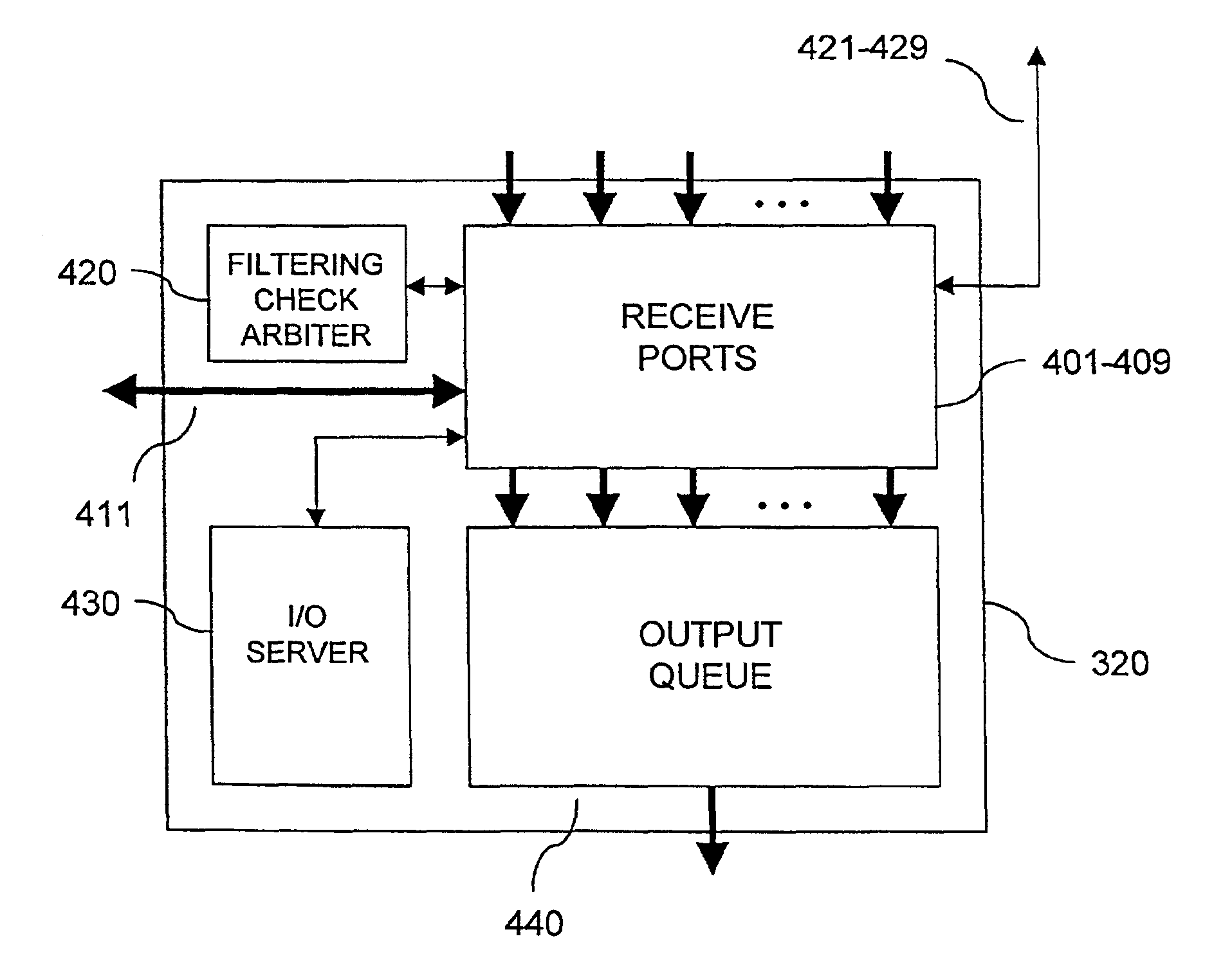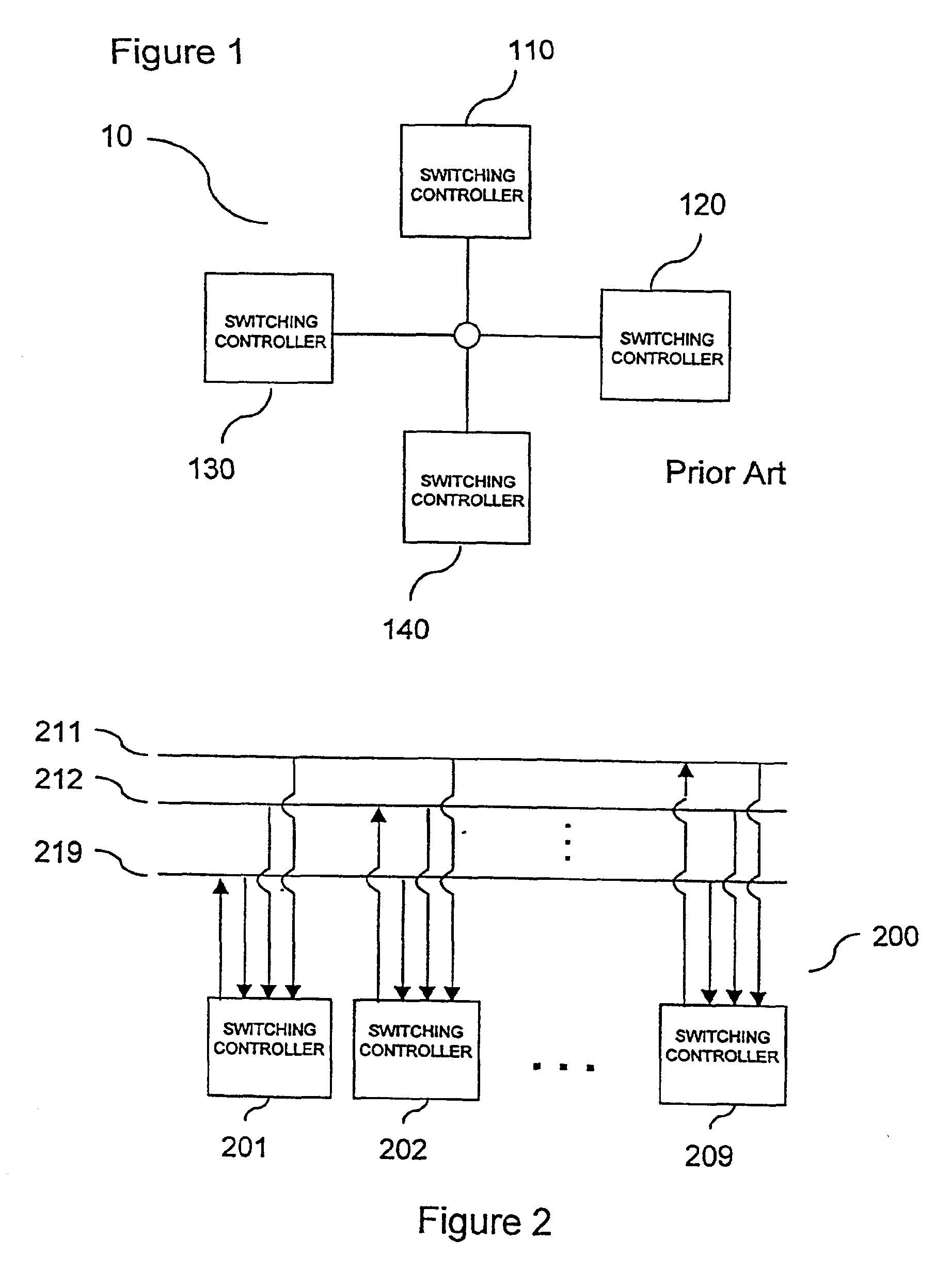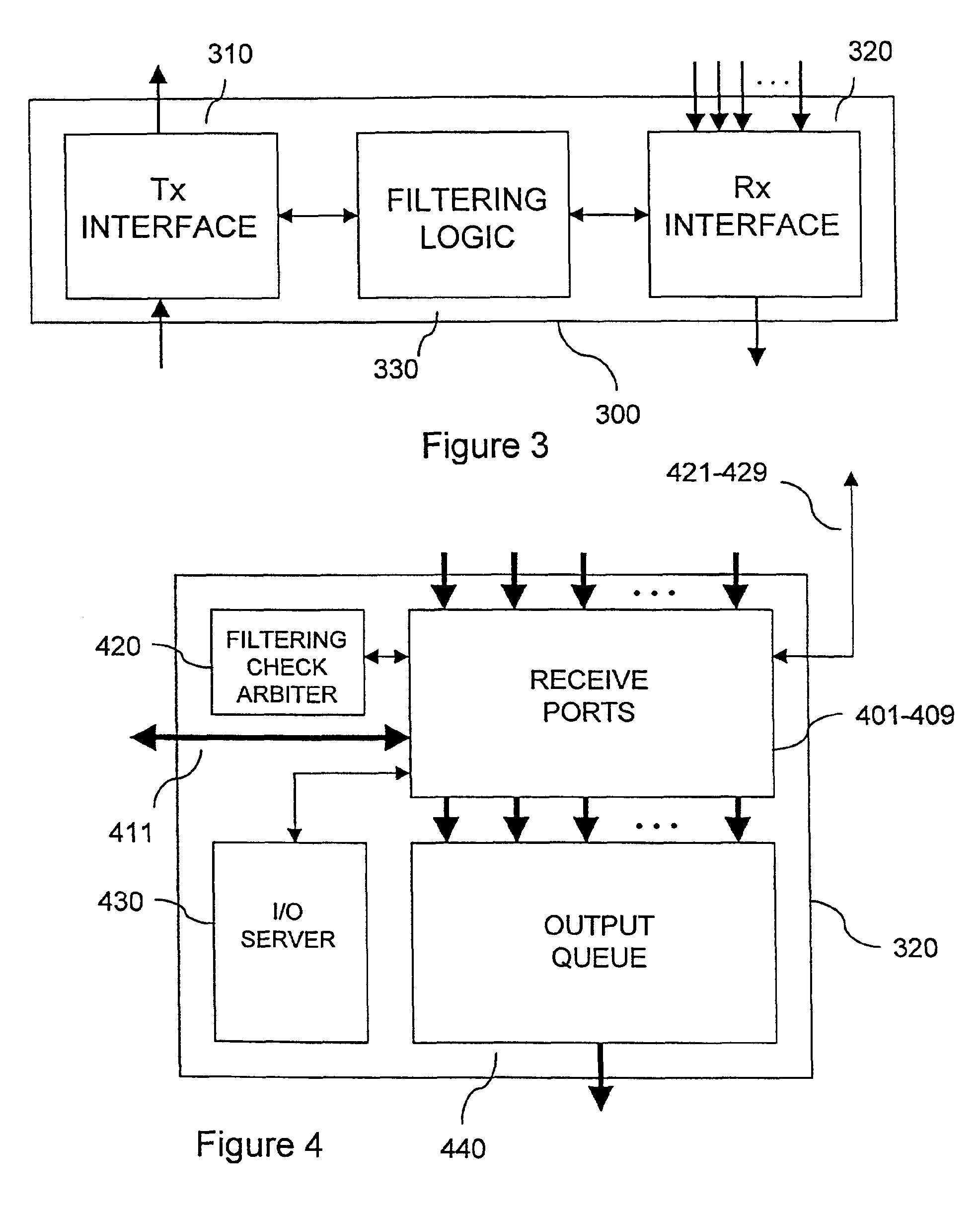Receive processing for dedicated bandwidth data communication switch backplane
a data communication switch and backplane technology, applied in data switching networks, frequency-division multiplexes, instruments, etc., can solve the problems of inefficiency of receiving processing resources, clock cycles, and congestion on the transmit side of the bus, so as to avoid contention, eliminate the inefficiencies of shared bandwidth switch backplanes, and avoid high parallel traffic
- Summary
- Abstract
- Description
- Claims
- Application Information
AI Technical Summary
Benefits of technology
Problems solved by technology
Method used
Image
Examples
Embodiment Construction
[0020]The present invention applies to a dedicated bandwidth switching architecture such as the LAN switching architecture shown in FIG. 2. The preferred connectivity pattern includes unidirectional data transmission lines 211-219 assigned to switching controllers 201-209, respectively. Each of switching controllers 201-209 transmits packets on its dedicated one of transmission lines 211-219 and receives packets from all controllers on transmission lines 211-219. Thus, on any particular clock cycle, all controllers 201-209 may transmit a single data burst and may receive a plurality of data bursts. It will be appreciated that by dedicating a transmission line to each one of controllers 201-209, the need to transfer data across backplane 200 at a reduced rate is obviated and, under normal operating conditions, all packets for transmission across backplane 200 may be forwarded without delay. Of course, the number of controller / transmission line pairs will vary depending on network req...
PUM
 Login to View More
Login to View More Abstract
Description
Claims
Application Information
 Login to View More
Login to View More - R&D
- Intellectual Property
- Life Sciences
- Materials
- Tech Scout
- Unparalleled Data Quality
- Higher Quality Content
- 60% Fewer Hallucinations
Browse by: Latest US Patents, China's latest patents, Technical Efficacy Thesaurus, Application Domain, Technology Topic, Popular Technical Reports.
© 2025 PatSnap. All rights reserved.Legal|Privacy policy|Modern Slavery Act Transparency Statement|Sitemap|About US| Contact US: help@patsnap.com



